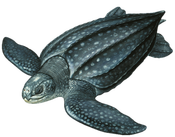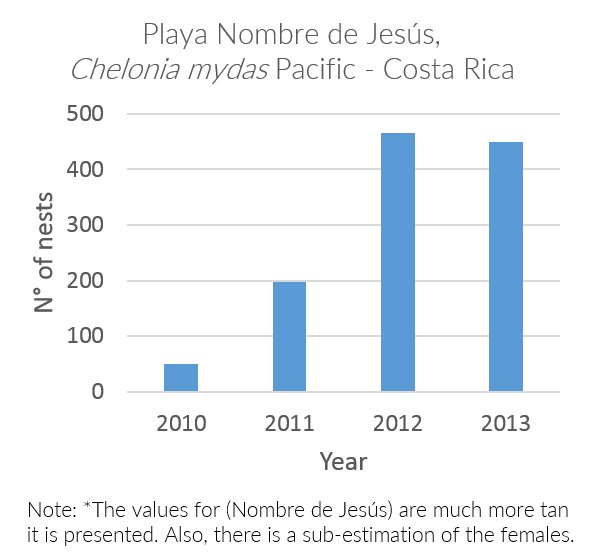Promotion of Black turtle Ecotourism in non-protected nesting beaches
BackgroundCosta Rica North Pacific Coast has the main nesting beaches for 3 species of sea turtles in the Eastern Pacific. All sea turtles are considered endangered by the IUCN, some more than others:
Different conservation and protection actions have been done in the area. Las Baulas National Marine Park was created to protect the main nesting beach for the leatherback turtles.. The same happens with the olive ridleys that nest in "arribada" in Ostional and Nancite. Unfortunately there are few places that protects the black turtles nesting beaches, as it happens in Parque Nacional Santa Rosa. (Fonseca et al. 2013)
|
CR North Pacific Nesting beachesGreen turtle: Protected beach - Red turtle: Non protected.
|
About Nombre de Jesús, real, honda and zapotillal nesting beaches
|
Several NGOs and scientists run research projects that provide enough data that shows the importance of several nesting beaches for black turtles. (CIT, 2015). In Costa Rican Pacific Coast, playa Nombre de Jesús is considered one of the countries' most important black turtle nesting beaches (Heidemeyer et al, 2014), and the numbers illustrate that fact.
It is important to highlight that the information provided only shows the data taken in one single beach, Playa Nombre de Jesús. The biologists of Kuemar, NGO that runs the research project, make an emphasis that the number of nests is a sub-estimation and the number of female turtles should be more. (Piedra R. comm. pers.).
|
impacts in nesting beaches
Costa Rican legislation protects turtles both inside and outside of protected areas in Costa Rica, though a number of key nesting beaches have not yet received official protected status (Fonseca et al, 2015), or at least a management to their threats from local and environmental authorities. In Nombre de Jesús, as same that in most non-protected beaches in Costa Rica, the main threats that affects black turtles are: (Blanco et al, 2013; Santidrián et al. 2015; UICN, 2015):
For this reason, the objective of Pecho Amarillo is to promote ecological tourism that seek to mitigate the impacts of tourism over the sea turtles, and inform visitors about how they can support in the mitigation of other threats that affect the turtles, specially in non-protected nesting beaches.
















